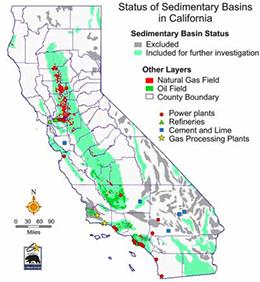
Geologic Storage Characterization Geologic formations capable of storing CO2 are known as sinks. Initial geologic characterization studies by WESTCARB examined major sedimentary basins in the region to assess their potential to serve as carbon sinks. Key criteria included overall size, as well as the depth, thickness, porosity, and permeability of sediments. Value-added benefits that may be realized from enhanced oil recovery (EOR) or enhanced coal bed methane recovery (ECBM) were a consideration in the screening process. Some sedimentary basins were excluded because they are too shallow, lack porous or permeable rocks, or have land use restrictions such as those pertaining to wilderness areas or military bases. Nonetheless, WESTCARB identified a significant geologic storage resource within the region. Two promising areas, the Sacramento Basin of California and the Colorado Plateau of Arizona, were selected for geologic characterization projects. Detailed site characterization from field projects—the Citizen Green Well, the Northern California CO2 Reduction Project, and the Arizona Utilities CO2 Storage Pilot—provide additional information on the opportunities for geologic CO2 storage in these respective areas. Access to data from geologic characterization studies is provided via WESTCARB’s Carbon Atlas and the U.S. Department of Energy’s National Carbon Explorer (NATCARB) and Carbon Atlas.. State-specific results ar also available in WESTCARB reports for California, Nevada, and Oregon and Washington. |
Click map to enlarge
|
